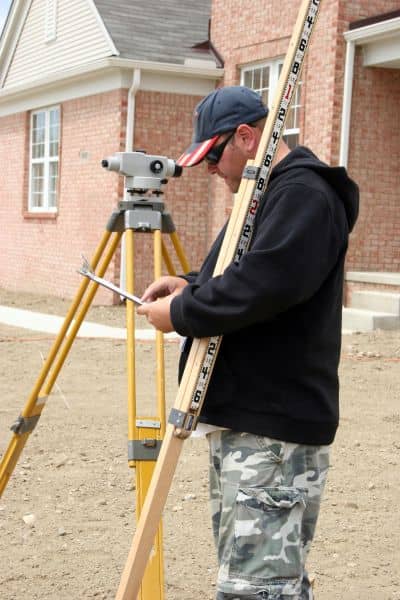
Owning a home means planning for the future. One document that many homeowners don’t expect is the FEMA elevation certificate. It may sound complicated, but it affects how insurance companies, banks, and even buyers see your property. In Denver, where houses sit near rivers, creeks, and the foothills, knowing your elevation can save money and give you peace of mind.
What Is a FEMA Elevation Certificate?
A FEMA elevation certificate is an official form that shows how high your home sits compared to the base flood elevation, or BFE. In simple words, it tells you if your house is above or below the level where flooding could happen.
Surveyors, engineers, or architects prepare the certificate using precise field measurements. The data includes your property’s location, building details, and the lowest floor elevation. All of this helps people understand the risk of flooding at your home.
Although it may feel like one more piece of paperwork, it holds important value. It guides insurance companies, helps local governments with safe development, and gives you clear facts about your home.
Why Homeowners Need a FEMA Elevation Certificate
This document comes up more often than most people think. It can shape insurance costs, affect property sales, and even determine whether you can build or remodel.
Flood Insurance
Flood insurance rates depend heavily on your property’s elevation. Insurance companies use the FEMA elevation certificate to see if your home sits above, at, or below the flood line. If you are higher, you may qualify for cheaper rates. If your house is lower, you may pay more. Without this certificate, companies often assume a worst-case scenario, which can make your policy more expensive than it should be.
Selling Your Home
When you put your home on the market, buyers and lenders want clear proof of risk. A certificate provides that proof with official numbers. In Denver, houses near Cherry Creek or in low-lying areas around Commerce City often need one before a sale moves forward. Having the certificate ready can make your property easier to sell, since it answers questions about flood safety right away.
Building and Permits
If you plan to build or remodel, cities may ask for an elevation certificate before approving permits. The data makes sure the new structure meets flood safety standards. In areas near the South Platte River or smaller creeks, local officials often check elevation certificates before construction begins. To keep the process simple, many homeowners choose firms that offer broader surveying solutions, since these companies can take care of elevation certificates, site plans, and other documents required for construction approval. This step helps reduce future damage and keeps neighborhoods safer.
How It Affects Flood Insurance Costs

The biggest impact of a FEMA elevation certificate shows up in your insurance bill.
- Homes above base flood elevation often get cheaper premiums.
- Homes at or below the line usually cost more to insure.
- Sometimes the certificate proves a property is safer than FEMA maps suggest, which can reduce rates.
For example, a homeowner near Sanderson Gulch may believe their home is at high risk because of past flooding. But if a certificate proves the house sits above expected water levels, that evidence can lower insurance costs. Over time, the savings can add up to thousands of dollars.
In some cases, the certificate even allows homeowners to challenge or appeal insurance rates. This can be especially helpful in older neighborhoods where flood maps have not been updated in years.
How to Get a FEMA Elevation Certificate
The process is simple and does not take long. You start by hiring a licensed surveyor or engineer. They will visit your property, take measurements, and complete FEMA’s official form. In many cases, the same companies that provide property survey services also take care of elevation certificates, which makes the process easier for homeowners. Once finished, you can give the certificate to your insurance provider or keep it for later use.
Most homeowners spend only a few hundred dollars to get it done. The process usually takes less than a week, depending on the surveyor’s schedule. While it may feel like an extra cost at first, the savings in insurance rates often outweigh the fee.
Clearing Up Common Misunderstandings
Because the term sounds technical, people often have the wrong idea about what this certificate does.
- It’s not just for homes near water. Flooding can happen far from rivers or lakes. Heavy rain can overload storm drains and create risks in many Denver neighborhoods.
- It doesn’t always lower insurance. The certificate makes sure your rate is based on facts, not guesses. Sometimes that means lower costs, but not always.
- You may need a new one after major changes. If you raise your house, add a basement, or make big changes, you’ll likely need an updated certificate.
Real-Life Scenarios Where It Matters
The FEMA elevation certificate plays a role in everyday situations:
- Selling a Home in a Flood Zone
Imagine trying to sell a house near Cherry Creek. A buyer might worry about flood risk. A certificate provides official proof, helping the deal move forward. - Building on a New Lot
Developers in suburbs like Thornton or Littleton often need certificates before starting construction. Cities want to make sure new houses are built above danger levels. - Appealing Insurance Rates
A homeowner might feel their flood insurance is too high. With a certificate, they can challenge the rate and show proof of safety.
Each of these cases shows how valuable the document can be for both financial and safety reasons.
Do You Need One?
Not every property requires a FEMA elevation certificate, but many do. Checking is easy. FEMA has online flood maps where you can see your area’s risk. You can also call your insurance provider or ask the planning office.
If your home is in or near a mapped floodplain, you will likely need the certificate at some point. Even if you don’t, having one can still provide peace of mind, especially in a city like Denver where sudden storms sometimes cause unexpected flooding.
Conclusion
A FEMA elevation certificate provides clear details about your home’s flood risk. With this knowledge, you can make better decisions about insurance, property improvements, and long-term planning. Even if you never experience a flood, having the facts on hand brings peace of mind.
For many homeowners, it’s simply one more way to feel confident about protecting both their property and their future.





